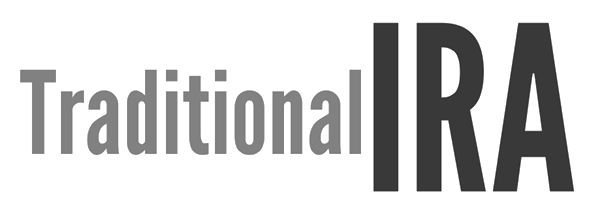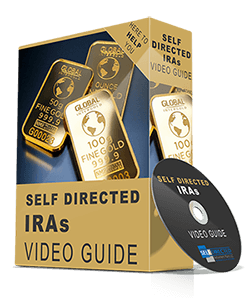What is a Traditional IRA?
A traditional IRA is an individual retirement account that enables the growth of your earnings without immediate tax obligations. Taxes are only levied on the investment gains when you make withdrawals during your retirement years, allowing for potential tax savings and the accumulation of funds for your future financial security.The money you place in a traditional IRA goes towards your retirement and can be invested in various places, such as stocks, bonds, or real estate. Traditional IRAs are held and handled by a custodian.
How Does a Traditional IRA Work?
The traditional IRA is a pre-tax contribution individuals make in their retirement accounts. It is tax-deferred until you withdraw it during your retirement). This means that taxes on your contributions and subsequent earnings will be deducted when you take a distribution. For example, if you contribute $6,000 and it earns $1,000 in your traditional IRA account, the tax will be deducted when you take a distribution. The distributed amount will be taxed as ordinary income and if you wait until you reach the age of 59 ½ the IRS 10% penalty disappears. Inside the IRA your earnings might be similar to capital gain earnings outside the IRA but at distribution time it becomes regular income.
How to Open a Traditional IRA?
You can open a traditional IRA account in two ways:
- Brokers: An investment broker is great if you make investments yourself. They can give you options of what is available in their services like mutual funds, bonds, stocks, etc.At SD Retirement Plans we can guide you through your entire retirement planning process and offer some personalized solutions!
- Robo-advisors: These advisors are equipped with all the recognizable investing names. All you have to do is feed in your investing needs and goals, and they will come up with the best options for you.
What are the Advantages and Disadvantages of the Traditional IRA?
Here’s a basic overview of the several advantages and disadvantages of the Traditional IRA:
Advantages of the Traditional IRA
- There are no income limits to contributing or opening a traditional IRA account. Any earned income can be used for contributions.
- Gains on the taxes normally due with a standard brokerage account will be deferred into the future.
- Your traditional IRA money can be used to cover college expenses with no early distribution penalty. But you will have to pay tax on the distribution.
- If you want to purchase your first home, you can use about $10,000 from your traditional IRA account. Although you will owe tax on the distribution, there won’t be penalties.
Disadvantages of the Traditional IRA
- A 10% early distribution penalty and taxes are applied if you tap the money before your retirement age of 59 ½.
- You must take your required minimum distributions at 73 but this has been moving upward and there is a possibility of the age going to 75.
- If you have a retirement plan at work, the ability to deduct IRA contributions is reduced or eliminated at higher incomes.
Need Help with Traditional IRA?
The Traditional IRA Rules
Who is Eligible for a Traditional IRA?
Anyone can open a traditional IRA account. However, for tax deduction, not everyone is eligible. Tax deduction on the contributions depends on your income status.
According to the latest MAGI (modified adjusted gross income) 2025, there are full deductions if a retirement plan at work covers you and your income is less than $79,000. There is a partial deduction if your income is more than $79,000 and less than $89,000. And you won’t see any deductions if your income is more than $89,000.
Traditional IRA Distribution and Withdrawal Rules
- You can start tapping from your traditional IRA account after you reach 59 ½. You need to pay regular income tax on the withdrawals.
- Early withdrawal of funds from your traditional IRA will result in a 10% penalty. This won’t happen if you come under exceptions like needing money to buy house or college fees.
- Just because you hit the retirement age does not mean you have to start tapping from your IRA account. You can wait till you reach the required minimum distributions age, 73.
What are the Traditional IRA Contribution Limits?
According to the IRS, you can only contribute up to a limit in your traditional IRA account annually. This limit depends on your age. The tax years 2024 and 2025 have $7,000 for people below 50. Savers above 50 can make higher annual contributions through catch-up contributions for an additional $1,000 (total of $8,000).
What is Better – Traditional IRA or Roth?
The answer depends on individual goals and needs. A traditional IRA is tax deductible. This means that funds are taxed when you withdraw them during retirement. But withdrawals from a Roth IRA are tax-free.
Apart from this, contribution limits are the same for both in 2025. If you are below 50, you can contribute $7,000. If you are above 50, you can make an additional $1,000 contribution.
So, what’s better? Well, it entirely depends on what you need. If you don’t want to face the RMDs and avoid tapping unnecessary money just because you hit the RMD age, you should consider a Roth IRA. If you think you will be in a lower tax bracket at retirement – a tradional IRA might make sense. If you think you will be in the same tax bracket – meaning the same amount of tax then a Roth IRA might be a good decision and any earnings will be tax free.
Should You Invest in Traditional IRA or Roth?
Deciding whether to invest in a Traditional IRA or a Roth IRA depends on several factors, including your current financial situation, future tax expectations, and retirement goals. Here are some key considerations to help you make an informed decision:
-
- Tax Treatment: Traditional IRA contributions are often tax-deductible in the year they are made, potentially lowering your current taxable income. However, withdrawals from a Traditional IRA during retirement are subject to income tax. In contrast, Roth IRA contributions are made with after-tax money, meaning they are not tax-deductible initially. However, qualified withdrawals from a Roth IRA in retirement are generally tax-free.
-
- Current and Future Tax Bracket: If you expect to be in a higher tax bracket during retirement, contributing to a Traditional IRA may provide immediate tax benefits. Conversely, if you anticipate being in a higher tax bracket in the future, a Roth IRA may be advantageous as it allows tax-free withdrawals during retirement.
-
- Future Tax Laws: Predicting future tax laws and rates can be challenging. However, if you anticipate higher tax rates in the future due to changes in tax policy or your personal circumstances, a Roth IRA can provide protection against potential tax increases.
-
- Access to Funds: Traditional IRA withdrawals before the age of 59 ½ may incur a penalty, although there are exceptions for specific circumstances. Roth IRA contributions can be withdrawn penalty-free at any time, while earnings may be subject to penalties unless certain conditions are met. If you anticipate needing access to your contributions before retirement, a Roth IRA may offer more flexibility.
-
- Required Minimum Distributions (RMDs): Traditional IRAs require you to start taking RMDs once you reach age 72 (as of 2021), which can affect your tax situation. Roth IRAs do not have RMDs during the account owner’s lifetime, allowing for potential continued growth of your investments.
-
- Estate Planning: Roth IRAs offer potential estate planning advantages as they are not subject to RMDs for the original account owner. This can allow for a longer tax-free growth period and the potential to pass on tax-free assets to beneficiaries.
Ultimately, the decision between a Traditional IRA and a Roth IRA depends on your unique circumstances, including current and future tax considerations, access to funds, and your long-term retirement goals. Consulting with a financial advisor or tax professional can provide personalized guidance based on your specific situation.
Can a Traditional IRA be converted to a Roth IRA?
Yes. In order to convert from a traditional IRA to a Roth IRA, you must first meet eligibility requirements. There are three different ways that your IRA can be converted.
- The Rollover With this option, you can take funds that would be going to your traditional IRA, and instead roll them over into a Roth IRA, but it must take place within 60 days of the distribution.
- Between Two Trustees With this option, the trustee you have in charge of your traditional IRA directs your funds to the trustee of your new Roth IRA account for you.
- Transfer With the Same Trustee This option operates within the same bank or institution and is, in many ways, the simplest option. Your trustee for your traditional IRA sets up a new Roth IRA account and then proceeds to direct your funds there.
How do I know if the Traditional IRA is the best option for me?
First, look at your income in order to determine this. In tax year 2025, is it more than $165,000 (Phasing out from $150,000) if you are single or filing separately? Is it more than $246,000 (phasing out from $236,000) if you are filing jointly? If so, the traditional IRA may be a great option. If it’s less, then you are eligible for the Roth IRA as well, and if this is the case, you should look at other factors before you make your final decision. This is where discussing it with a professional will come in handy the most, because you need to determine a projection of which tax bracket you will be in, and based on this, you can move forward with your decision.
FAQs
What to consider before withdrawing from your traditional IRA account?
If you want to avoid the 10% early withdrawal penalty, consider tapping your account after hitting the 59 ½. However, this does not mean you will have to take distributions. l You can wait till you hit the required minimum distributions (RMDs) age.
Can you withdraw from your traditional IRA without penalties?
The IRS usually imposes a 10% penalty for withdrawing funds from your traditional IRA before reaching the age of 59 ½. However, you can avoid this in certain circumstances like:
- No health insurance with a huge medical bill
- Unemployed and have health insurance premiums
- Permanently disabled and are unable to work
- Fund higher education
- Inherited an IRA
- Want to buy, build or rebuild a home
- SEPP
- Have unpaid federal taxes
- Qualified reservist called to active duty
Get Your ONE-on-ONE CONSULTATION



